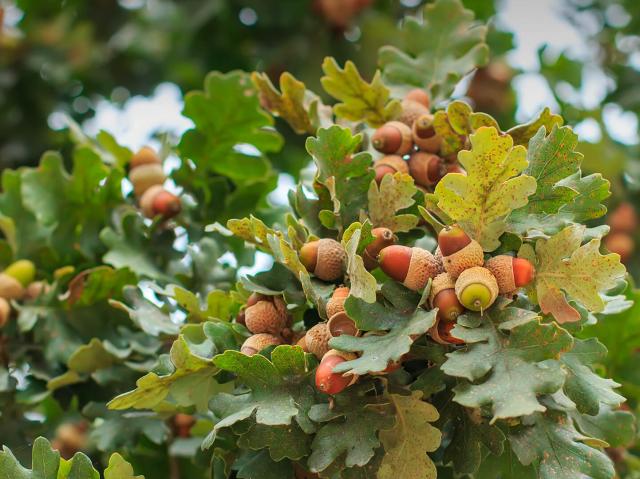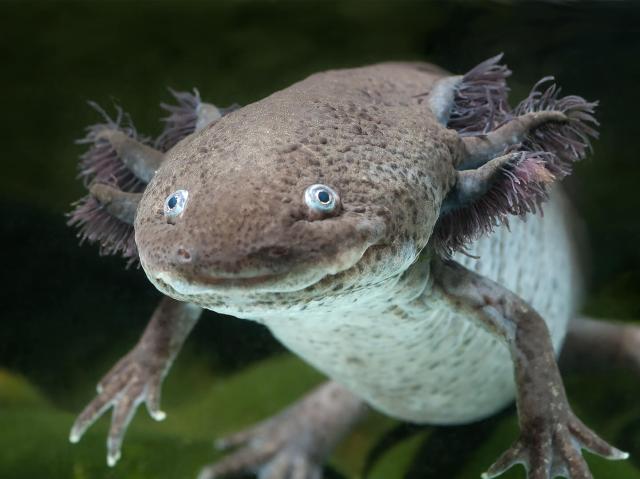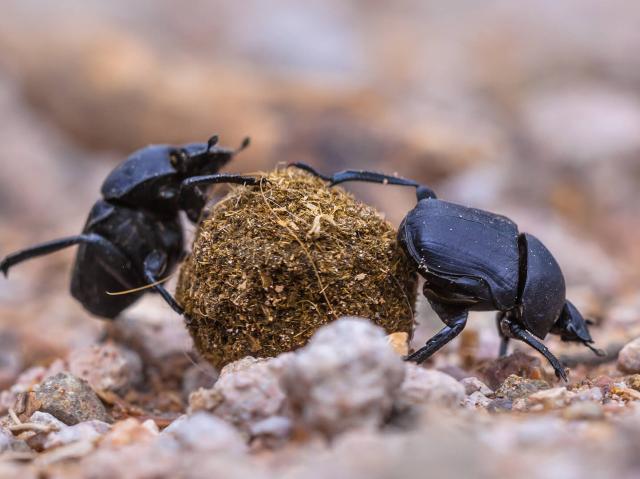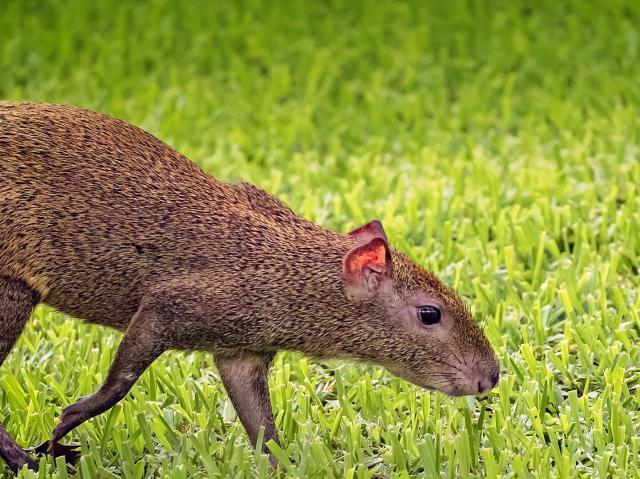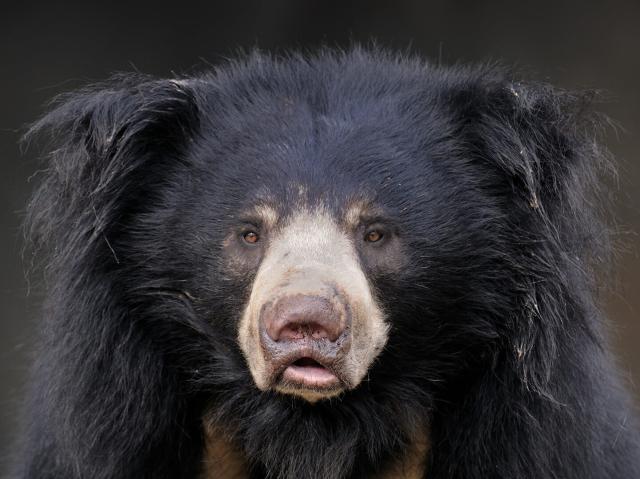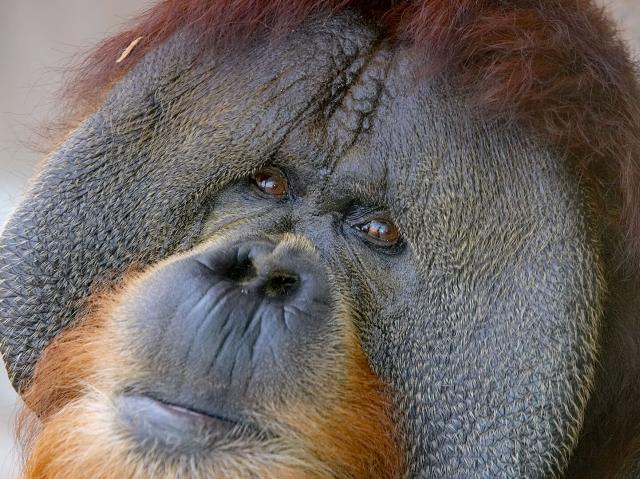
Andean (Spectacled) Bear

- Class: Mammalia (Mammals)
- Order: Carnivora
- Family: Ursidae
- Genus: Tremarctos
- Species: ornatus

ABOUT
Andean bears are also known as "spectacled bears" for the rings of white or light fur around their eyes, which can look like eyeglasses (or spectacles) against the rest of their black or dark brown fur.
These markings often extend down their chest, giving each bear a unique appearance and helping scientists identify individuals. The markings also give them their scientific name: Tremarctos ornatus, or decorated bear.
As midsize bears, Andean bears are between four and six feet long, and stand two to three feet tall at the shoulder. Males are 30 to 50 percent larger than females.
Scientists believe Andean bears use vocal communication more than any other bear except giant pandas. They make unique vocalizations that are quite "un-bear-like": a shrill screech and a soft, purring sound. Mother bears may use different vocalizations to communicate with their cubs.
HABITAT AND DIET
Andean bears live in Andean countries from Venezuela to Bolivia, living in forests, grasslands, and scrublands. Although they're diurnal, very little is known about them in their native habitat, as they're shy and tend to avoid people.
Andean bears are true arboreal bears, using their long, sharp front claws to climb and forage for food. They sometimes build leafy platforms in trees where they eat and rest. Because food is available year-round where they live, Andean bears are active year-round and do not spend months hibernating in dens like American black bears or brown bears.
Andean bears are omnivores, known to eat more than 300 different kinds of plants and over 20 kinds of animals. The most common items in their diet appear to be plants, especially fruits, palms, and bromeliads. Bears living in scrubland habitat are known to seek out snails and to eat cacti. Sometimes they will hunt cattle and other livestock or forage in cornfields. They also occasionally eat carrion.
While mostly solitary, Andean bears may gather together to eat where food is plentiful, such as a cluster of trees bearing fruit or corn ripening in a farmer's field. Eating so much fruit helps these bears play an important role in forest ecology: the seeds they eat are excreted in their droppings as the bears move around, spreading seeds over long distances and planting the next generation of fruit trees throughout the forest.
At the San Diego Zoo, Andean bears eat a wide variety of foods including roots, whole fruits, nuts, rabbit, and more.
FAMILY LIFE
A female gives birth to one, two, or rarely three cubs in an isolated den, but very little is known about how a female chooses her den. All maternal dens discovered so far have been like nests, on the ground or in cavities below rocks. Like other newborn bear cubs, Andean bear cubs are helpless and totally dependent on their mothers. Cubs first leave the safety of the den when they are about three months old. It is not known how long the youngsters stay with their mother, but scientists believe that cubs are over one year old when they venture out on their own.
CONSERVATION
Like too many species, Andean bears are at risk of extinction. Their biggest threats come from people: habitat loss and fragmentation, coexistence challenges, and poaching. Andean bears are now protected by international trade laws, but they are still illegally hunted for their meat, fat, and body parts, or sometimes in retaliation or to protect livestock. Conservation scientists estimate that fewer than 10,000 Andean bears may remain in their native habitats, and their populations continue to decrease. Mining operations, oil exploitation, farming, and climate change all continue to impact their native habitat.
Charismatic and easily recognized, Andean bears are one of the flagship species of national parks in the Andes. A Species Survival Plan (SSP) is in place to help save them through the American Association of Zoos and Aquariums (AZA).
San Diego Zoo Wildlife Alliance is committed to Andean bear conservation in Amazonia. Through our Amazonia Conservation Hub on the Manu landscape of southwest Peru, our teams are documenting Andean bear presence and learning about critical aspects of bear ecology and behavior—such as foraging behavior, trail use, and marking behavior—to determine where Andean bears live, how they interact with their ecosystem, and what they need to thrive.
Our goal is to improve conservation planning and action for Andean bears, mountain tapirs, and other Andean forest mammals, through quantitative research that can also be implemented by others, elsewhere, for greater impact. We’re collaborating with partners from Colombia to Bolivia, with our primary focus on several forests in the Peruvian Andes. Our collaborative network includes local and national governments, biologists from several countries, Peruvian-based non-governmental organizations, and local communities.
Photos from field cameras help us collect several types of data (like species occupancy and individual body size), alongside non-invasive hair and fecal sampling to learn about factors like genetics and diet, while building the capacity of others to do the same. We also conduct education and outreach activities with our community partners, building relationships to help establish an Andean carnivore coexistence program.
By joining San Diego Zoo Wildlife Alliance as an ally for wildlife, you help save wildlife worldwide.
Sounds
LIFE SPAN
26 years on average
Age of maturity: 4 years old
YOUNG
Gestation: About 65 days, but female bears experience delayed implantation
Number of young: 1-2 cubs; rarely 3
Weight at birth: 10 to 18 ounces (284 to 510 grams)
SIZE
Up to 6.5 feet (1.8 meters) long; males are up to 50 percent larger than females
Height: Up to 31 inches (80 centimeters) tall at the shoulder
Weight: Females: 130 to 176 pounds (60 to 80 kilograms)
Males: 220 to 386 pounds (100 to 175 kilograms)
FUN FACTS
Andean bears have only 13 pairs of ribs, one less than other bears.
Andean bears are the only bears found in South America. Since literature's Paddington Bear came from "darkest Peru," he would have been an Andean bear.
The largest bear that ever lived was the giant short-faced bear, a relative of the Andean bear. Fossils of this bear have been found in California's La Brea Tar Pits.
Andean bears are the only bears known to eat bromeliads.



